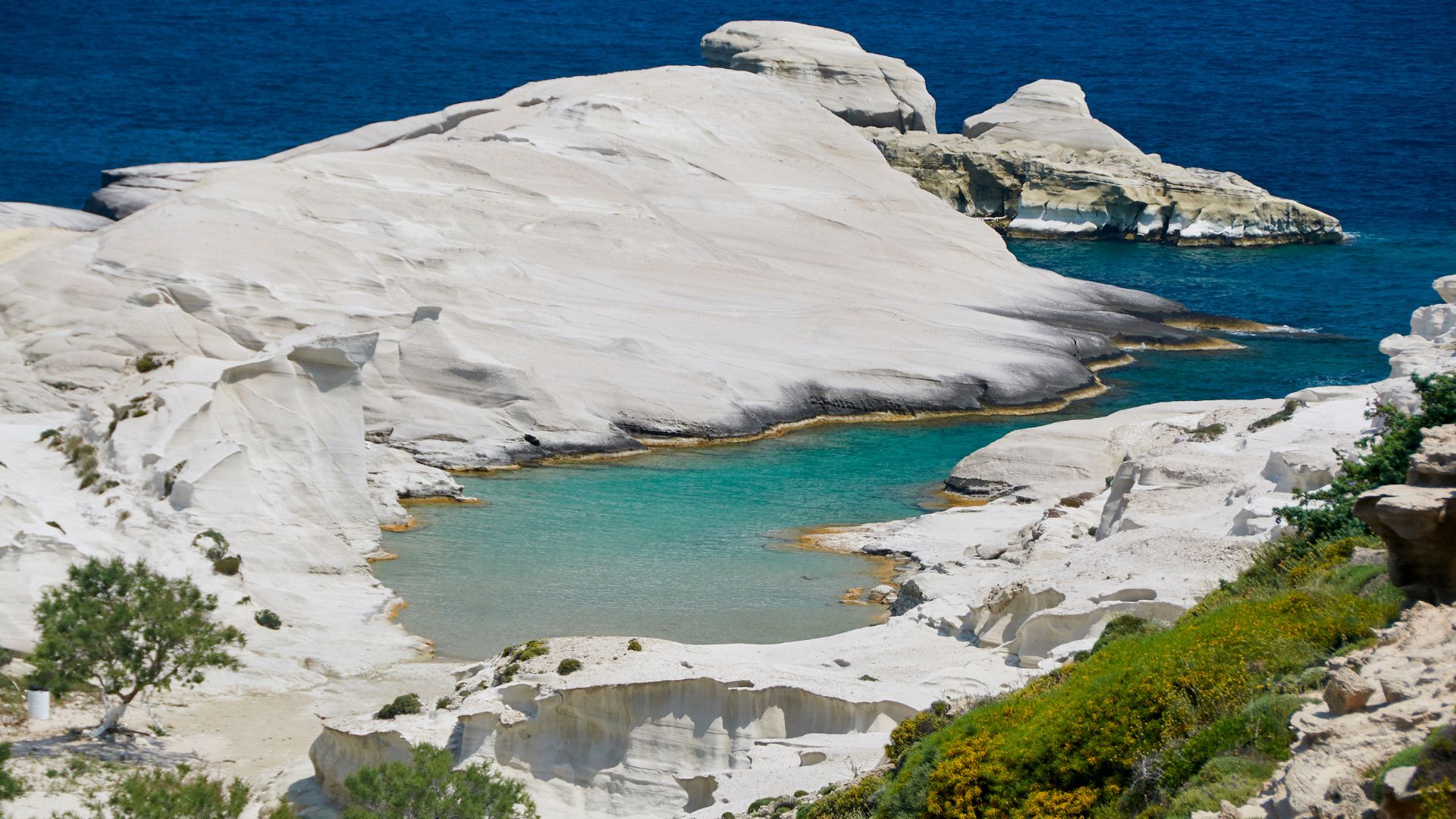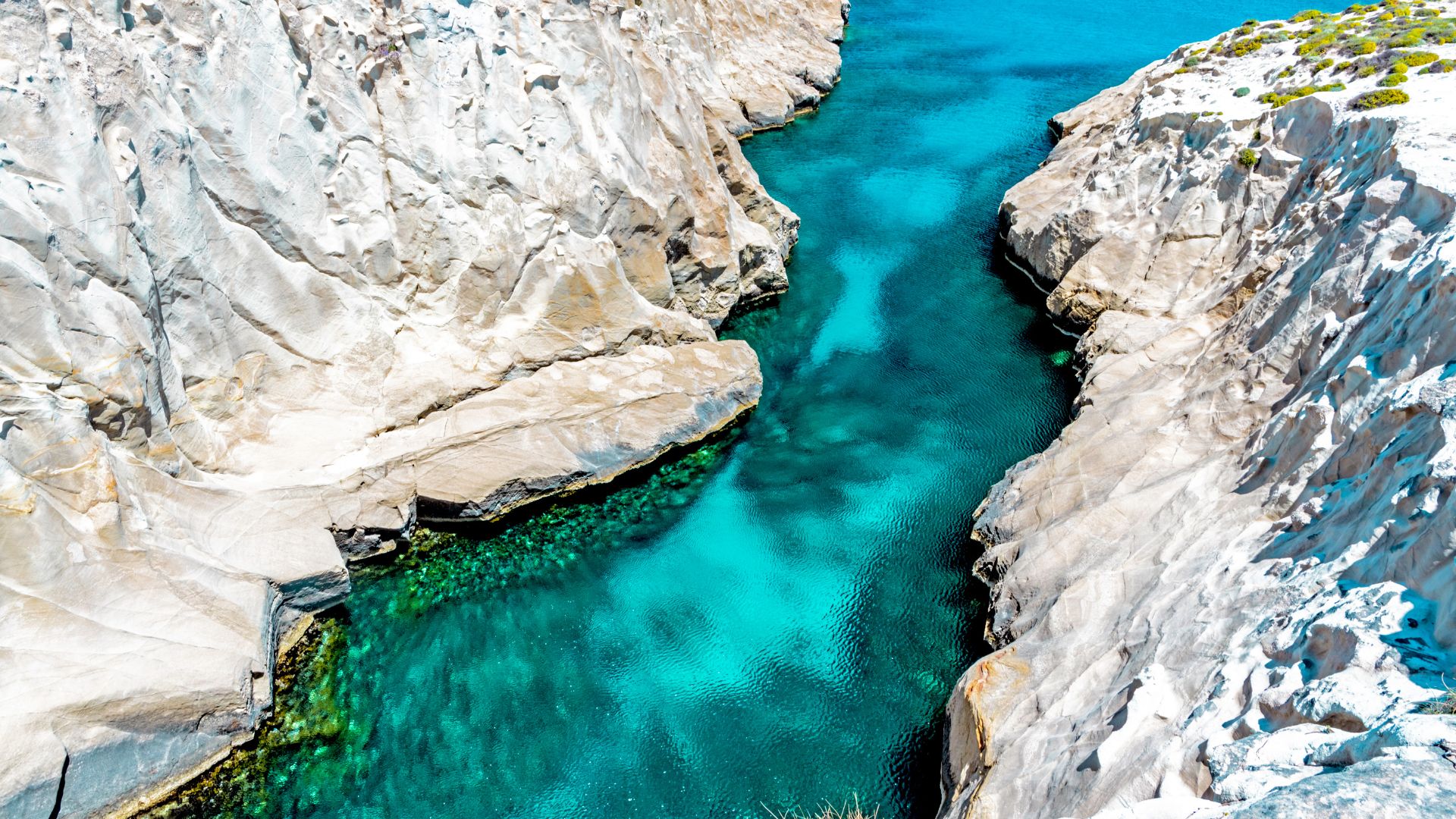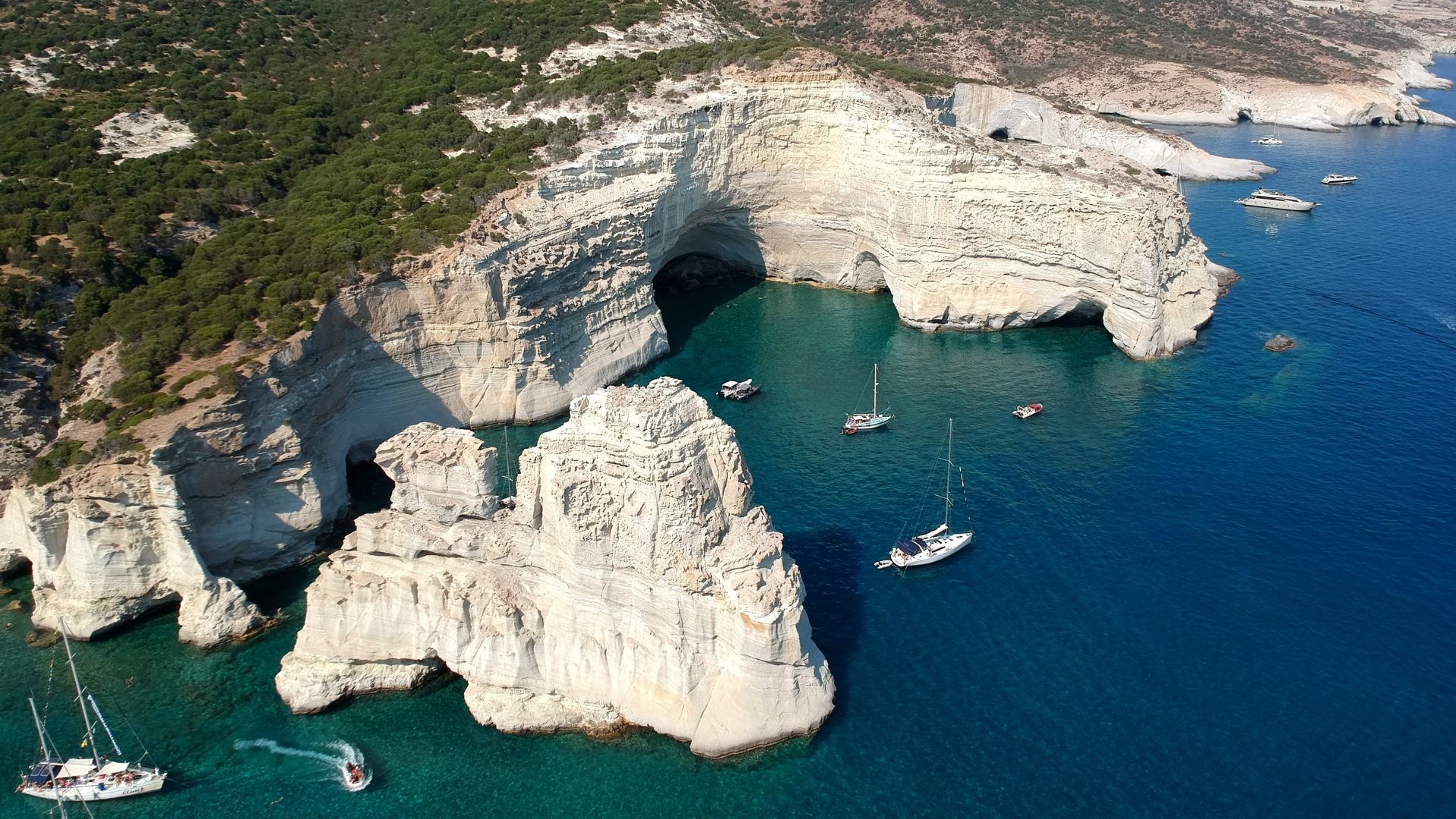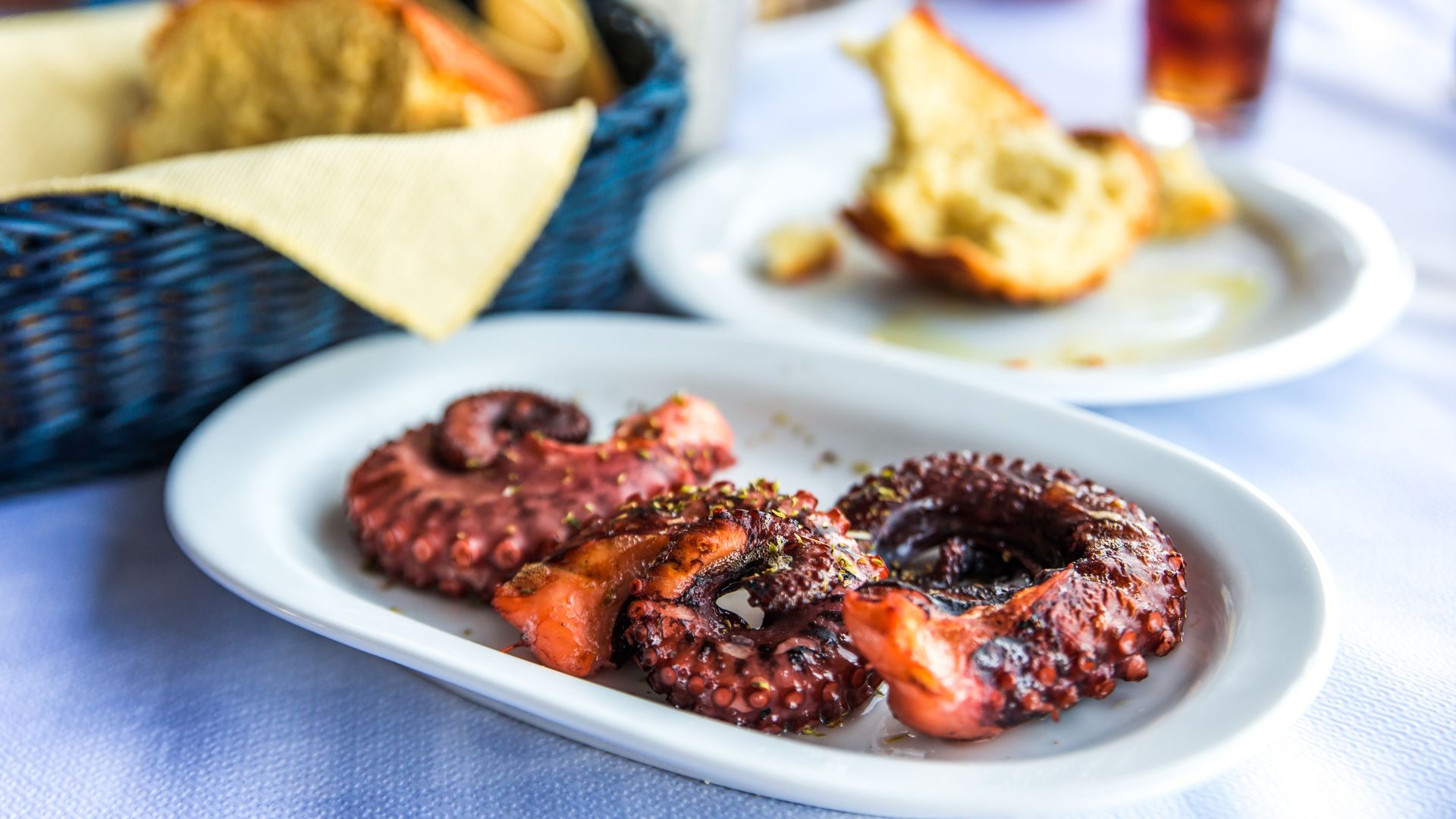Standing on Sarakiniko Beach in Milos, I honestly felt like I’d landed on another planet. Smooth white volcanic rocks stretched in every direction, shaped by centuries of wild wind and sea into something that barely seemed real.
Sarakiniko Beach’s bright, moon-like surface makes everyone who visits feel like they’re walking on the moon.
I wandered along the gentle curves and dips, letting the cool Aegean breeze brush across my face. Sunlight bounced off the rocks with such brightness, it almost hurt to look.
Every step made me realize why Sarakiniko is one of the Cyclades’ most iconic spots—a must-see for anyone who wants a truly unique travel experience.

Discovering Sarakiniko Beach’s Moonscape
Sarakiniko Beach stands out on Milos with its unusual landscape, bright white rocks, and unforgettable views.
The scenery feels almost unreal. Volcanic activity and the sea have shaped the rocks into dramatic forms.
First Impressions and Arrival at Milos
When I stepped off the ferry onto Milos, the island’s vibe hit me right away—it’s different from the rest of the Cyclades. The short drive from Adamas to Sarakiniko buzzed with anticipation.
Hills and villages slowly gave way to pale, strange shapes near the coast. By the time I parked at Sarakiniko, that out-of-this-world feeling had already started.
Walking down the sandy path, the white rocks nearly blinded me under the Greek sun. The sea looked impossibly blue against the stone.
It was early, and only a few other people dotted the shoreline. The peace was almost surreal.

What Makes Sarakiniko Unique in the Cyclades
Sarakiniko doesn’t resemble a typical Greek beach. There’s no sand—just smooth, chalky white rock everywhere.
Wind and waves carved this place into curves, shelves, and secret coves. The whole area feels wild and untouched.
No umbrellas, no beach bars—just rock and sea. The silence, broken only by wind and waves, sticks in my memory.
Highlights of Sarakiniko Beach:
- Bright white volcanic stone all along the shore
- Clear turquoise water for swimming
- Unique caves and arches to explore
- Great spots for jumping, photos, and a picnic
I couldn’t stop snapping photos. The landscape really does look like the moon’s surface, which probably explains why it’s so famous on Instagram.

How Sarakiniko’s Landscape Was Formed
Volcanic activity millions of years ago gave Sarakiniko its strange look. The rock here is mostly soft volcanic ash, called tuff, left from ancient eruptions.
Sea and wind slowly eroded the ash into these smooth shapes. The process never really stops, so the beach keeps changing, bit by bit.
The cliffs and shelves are safe to walk on, but I watched my step—some spots get slippery near the water. I spotted holes and tiny fossilized shells in the rock. That mix of natural forces and white stone against the blue sea makes Sarakiniko unforgettable.
Unforgettable Adventures on the White Rocks
Sarakiniko Beach is so much more than a pretty shoreline. The white volcanic rocks, crystal water, and wild scenery invite both adventure and wonder.
Every visit brings something new to explore or photograph. You can’t help but feel a connection to this odd, moonlike place.
Wandering the Lunar Landscape
Walking across Sarakiniko’s white rocks, I honestly felt like I’d stepped onto another world. Paths twist and turn over smooth stone, leading to hidden coves and sudden drops.
The limestone is so soft that my shoes left faint prints. Even in the morning, the rocks warmed my feet.
Some spots rise up like dunes, others dip into pools. I lost track of time tracing the ridges and peering into small caves shaped by wind.
I always pack water and sunscreen—the sun’s glare is no joke here. Tip: Wear sturdy sandals and sunglasses. Your eyes and feet will thank you.

Swimming and Cliff Jumping
The blue water at Sarakiniko is shockingly clear and cool. After baking on the rocks, slipping into the sea feels amazing.
Many people pick a spot and ease in for a swim. The sea bottom is sandy at first, but it drops off fast.
Cliff jumping is a thing here. I climbed to a few ledges where brave swimmers leap into the deep pools below. Local kids show off, while newcomers gather courage.
I always check the water depth before jumping—there aren’t any lifeguards. Floating on my back, staring at the bizarre rock shapes above, I felt like I was in a dream.
After swimming, I dried off on the smooth stones. There’s plenty of space to spread a towel.
Photography Tips for Capturing the Moonlike Views
Sarakiniko is a photographer’s playground, but it’s tricky to capture what you see. Early morning or late afternoon works best—the light is softer, shadows pop, and the rocks don’t look washed out.
I just use my phone and a polarizing filter. The filter helps with glare and keeps the white rocks from blowing out.
Wide shots show off the shapes and sky, while close-ups catch the rough stone and blue water. For sunrise or sunset, a tripod helps.
Pro Tip: Skip noon unless you want harsh, flat images.

Unexpected Moments and Local Legends
On my first visit, laughter echoed from inside a limestone cave. Locals told me stories about pirates hiding treasure in the cliffs.
Some say a few caves still hold secrets. One afternoon, I watched a goat pick its way across a narrow ledge, munching wild thyme.
Sometimes a fisherman passes by in a blue boat, waving as he checks his nets. Sarakiniko stays wild and a little mysterious, even when it’s busy.
Practical Guide to Visiting Sarakiniko Beach
Sarakiniko isn’t just stunning—it’s different from most beaches I’ve ever visited. A little planning goes a long way here.
Timing, transport, and safety matter if you want an easy, memorable day.
Best Times of Day and Year to Visit
I learned that timing changes everything at Sarakiniko. Summer (June–September) gets crowded, especially midday.
I try to arrive early, just after sunrise, or much later when the sun dips. The light is softer and the crowds are smaller.
Spring and fall are also lovely—fewer tourists and comfortable weather. Winter’s usually too cold for swimming, but the landscapes stay breathtaking.
There’s zero natural shade, so mid-afternoon visits can be brutal with the sun overhead.

Getting There: Transport and Parking
Driving to Sarakiniko worked best for me. The beach is about 4 km from Adamas, the main port.
I rented a car, but scooters and ATVs are popular too. If you can’t drive, local buses run from Adamas and Plaka—just check the schedule, especially in low season.
Parking is free and close to the beach. Arriving early helps snag a spot, especially in summer.
There’s not much shade near the lot or along the footpath, so I always carry water for the walk.
What to Pack and Safety Tips
Packing right made my day at Sarakiniko way better. Essentials:
- Plenty of water
- Snacks or picnic food (no beach cafes)
- Sunscreen
- Hat and sunglasses
- Sturdy shoes or sandals (the rocks can be sharp and slippery)
- Towel and swimwear
Shade is basically nonexistent, so a small umbrella or light cover-up helps. The white rock reflects sunlight, making it hotter than you’d expect.
Climbing around is fun, but I watch my step—some edges drop off quickly. The water, though crystal clear, can get deep near the rocks.
I only jump where others already have. No lifeguards here, so I stick with friends or stay in the shallows.

The Full Milos Experience: Beyond Sarakiniko
Milos isn’t just about Sarakiniko’s white moonscape. The towns pulse with life and charm, and the island hides more beaches than you’d believe.
Exploring the Charming Towns of Milos
Every trip to Milos should include Plaka, the capital. Plaka’s alleys twist between whitewashed houses and blue doors.
I loved wandering and catching sunset views from the Plaka Castle. Cafes serve Greek pastries, and cozy tavernas fill up with locals at night.
Klima, a fishing village, sits right on the water. It’s famous for its colorful boathouses—syrmata—many now turned into rentals and shops.
I found it peaceful just sitting by the sea, watching the fishermen and soaking up the relaxed vibe.
Pollonia, up north, charmed me with its harbor. You can get fresh seafood here and hop on boat tours to nearby islands.
I browsed boutiques and ended my day with ice cream by the water.

Other Must-See Beaches on the Island
Milos is packed with unique beaches. Kleftiko, only reachable by boat, blew me away with white cliffs and sea caves.
Snorkeling here, I spotted bright fish darting through the blue. It felt like a secret hideaway.
Firiplaka Beach has long sand stretches and shallow turquoise water—perfect for relaxing. A few beach bars let me grab a cold drink without leaving the sun.
Tsigrado Beach is for adventurers. You get down by climbing a rope and ladder through a rocky gap, but the soft sand and quiet shore are worth it.
That peaceful spot at Tsigrado became one of my favorite Milos finds.
Quick list of Milos beaches I explored:
- Kleftiko: Cliffs, caves, boat access
- Firiplaka: Sandy, shallow, easy to reach
- Tsigrado: Secluded, adventurous climb

Savoring Milos: Food, Culture, and Local Life
After wandering Sarakiniko’s lunar landscape, I realized Milos’s magic goes beyond its beaches.
The island’s flavors, traditions, and daily rhythms drew me in for a deeper look at authentic Greek island life.
Tasting Authentic Greek Cuisine Nearby
I ducked into small tavernas just a short drive from Sarakiniko. Menus featured kleftiko (slow-cooked lamb), grilled octopus, and Milos’s signature white eggplant.
Plates overflowed with mezedes like stuffed vine leaves and tangy cheeses.
One of my best meals happened in Klima, right by the sea. The catch of the day—fresh, grilled, and simply seasoned—tasted even better with sand under my feet and the Aegean in view.
I loved ending meals with loukoumades (Greek donuts drizzled with honey) and a shot of local ouzo.
For snacks, bakeries sold spanakopita and goat cheese pastries. Even the tiniest café offered homemade lemonade with wild herbs—simple, but full of island flavor.
Food in Milos felt personal, warm, and always fresh.


Cultural Encounters on Milos
When I wandered through Plaka, the hilltop capital of Milos, I could feel how daily island life still moves at an old-world pace.
Locals zipped by on scooters, waving as I paused to admire whitewashed houses with their blue shutters.
I came across artisans shaping ceramics, their hands covered in clay. Just a few steps away, shopkeepers sold handmade soaps and olive oil they’d pressed from their own groves.
Someone had taped a schedule to the village church, listing summer festivals with dancing and music. The invitation felt open to everyone—even us travelers who just happened to be there.
People in the square chatted for ages, never in any rush. Retirees played backgammon, and school kids dashed through the winding lanes.
As dusk settled in, villagers met for coffee, swapping stories about fishing and family. Every encounter felt warm, like for a moment, I belonged to Milos too.


